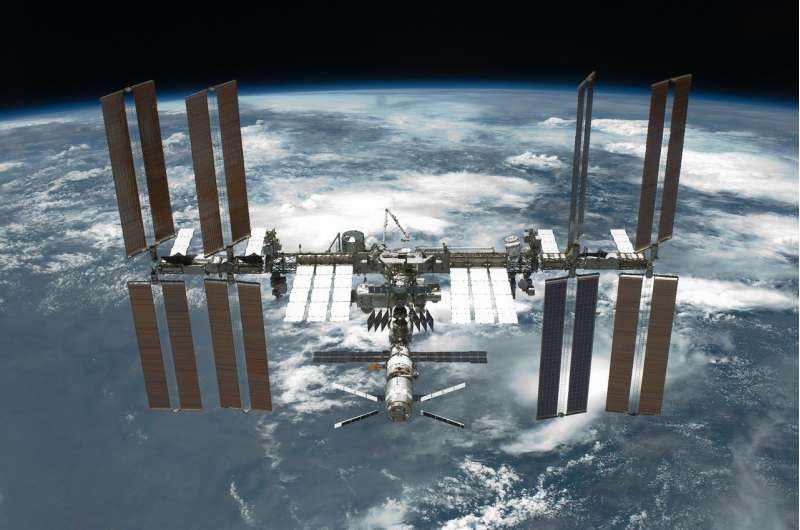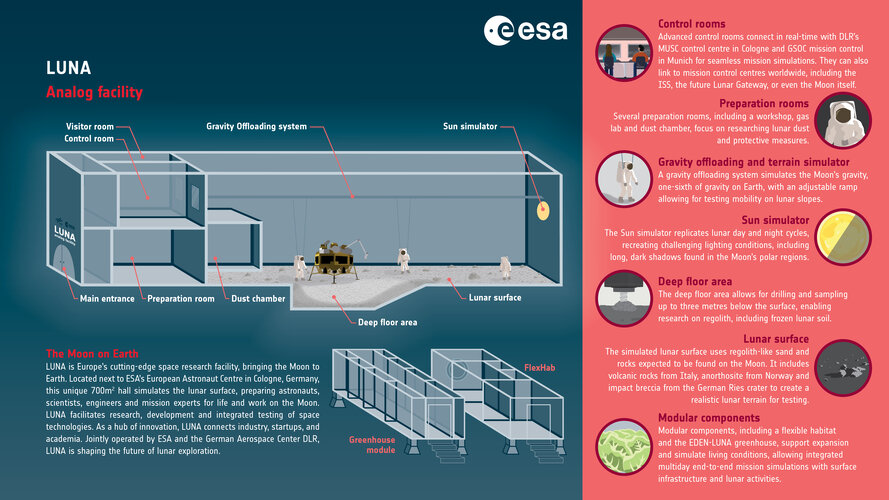Research abounds at the International Space Station
Tuesday, 24 September 2024 07:48
At the International Space station, researchers are making strides in everything from Earth science to chemical properties. Here's what they're up to and why it matters.
Recently, researchers have found that eddies, or swirling wind patterns, increased moisture evaporation in an alfalfa field. A better understanding of the complex exchange of water and heat between the ground and atmosphere could improve remote sensing products and their use in agricultural water management.
The station's ECOSTRESS instrument takes high-resolution thermal infrared measurements of Earth's surface that provide data on changes in water availability, vegetation water stress, and agricultural water use. Researchers use observations from the USGS Landsat 8 and 9 satellites and ECOSTRESS to validate climate models and update data on Earth's surface energy (the amount of energy absorbed from the sun and radiated back into the atmosphere).
Firefly Aerospace wins contract to launch NOAA QuickSounder
Monday, 23 September 2024 23:19

Space Force taps four companies to design ‘Resilient GPS’ satellites
Monday, 23 September 2024 21:13

Low gravity in space travel found to weaken and disrupt normal rhythm in heart muscle cells
Monday, 23 September 2024 19:01
Johns Hopkins Medicine scientists who arranged for 48 human bioengineered heart tissue samples to spend 30 days at the International Space Station report evidence that the low gravity conditions in space weakened the tissues and disrupted their normal rhythmic beats when compared to Earth-bound samples from the same source.
The scientists said the heart tissues "really don't fare well in space," and over time, the tissues aboard the space station beat about half as strongly as tissues from the same source kept on Earth.
The findings, they say, expand scientists' knowledge of low gravity's potential effects on astronauts' survival and health during long space missions, and they may serve as models for studying heart muscle aging and therapeutics on Earth.
A report of the scientists' analysis of the tissues is published in the Proceedings of the National Academy of Sciences.
Previous studies showed that some astronauts return to Earth from outer space with age-related conditions, including reduced heart muscle function and arrythmias (irregular heartbeats), and that some—but not all—effects dissipate over time after their return.
A Soyuz capsule with 2 Russians and 1 American from the International Space Station returns to Earth
Monday, 23 September 2024 15:12
2 record-breaking Russians and an American who lived on space station for 6 months return to Earth
Monday, 23 September 2024 15:12
What happens to a person when they're stuck in space?
Monday, 23 September 2024 15:09
What was supposed to be a weeklong test flight in space has turned into a months-long stay for astronauts Butch Wilmore and Suni Williams. While the unexpected delays from their mission may not have any negative side effects on the future of space exploration, it could affect their physical and mental health.
What happens to your body when you're in outer space?
Jacqueline McCleary, assistant physics professor at Northeastern University, says the term for the effects of being in space are summed up by the acronym RIDGE, which stands for radiation, isolation and confinement, distance from Earth, gravity fields, and hostile/closed environments.
All those factors can affect a person, McCleary says.
"All space flight involves being in a microgravity environment," she says. "Astronauts essentially … are perpetually falling in an elevator."
'Motion sickness on steroids'
The longest space mission on record was about 476 days, McCleary says, so knowledge on the long-term effects are limited and research is still ongoing.
Wilmore and Williams blasted off from Florida on June 5. So, as of Sept. 20, they have been in space 107 days.
NASA’s cancellation of VIPER cedes leadership in lunar exploration
Monday, 23 September 2024 14:00

What every entrepreneur can (and should) learn from early space exploration
Monday, 23 September 2024 12:00
Florida company's space balloon takes big step toward 1st human flight
Monday, 23 September 2024 10:30
The weekend trip was a success for Space Perspective, the company that already has more than 1,800 people waiting for their chance to take balloon rides in a posh capsule up to the edge of space.
The Spaceship Neptune-Excelsior performed its first uncrewed test flight, soaring to an altitude of 100,000 feet, marking a big step toward the Brevard County space tourism company's march toward its first trip with humans on board next year.
"I could have been in it," Space Perspective cofounder Jane Poynter said Thursday while climbing aboard the company vessel MS Voyager that hauled the capsule back into port. "It worked that well. Everything went so well."
The MS in the ship name stands for "marine spaceport." It set out last week from Port Canaveral, traveling down the coast and into the Gulf of Mexico for the eventual test flight off the coast of St. Petersburg on Sunday.
Many of the company's 130 employees and their families were on hand to welcome the ship back at port as it docked alongside the likes of SpaceX's recovery vessels at North Cargo Berth 8 while a lone Carnival cruise ship was docked across the turning basin at the port.
Deep Blue Aerospace hop test suffers anomaly moments before landing
Monday, 23 September 2024 10:20
Hera planetary defence mission: solving asteroid mysteries
Monday, 23 September 2024 10:09 Video:
00:03:12
Video:
00:03:12
There’s a mystery out there in deep space – and solving it will make Earth safer. That’s why the European Space Agency’s Hera mission is taking shape – to go where one particular spacecraft has gone before.
On 26 September 2022, moving at 6.1 km/s, NASA’s DART spacecraft crashed into the Dimorphos asteroid. Part of our Solar System changed. The impact shrunk the orbit of the Great Pyramid-sized Dimorphos around its parent asteroid, the mountain-sized Didymos.
This grand experiment was performed to prove we could defend Earth against an incoming asteroid, by striking it with a spacecraft to deflect

 Image:
LUNA infographics
Image:
LUNA infographics 


